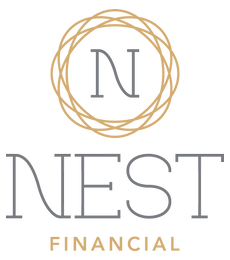“Finfluencers,” textbooks, and other financial education resources are always talking about the importance of diversifying your portfolio. A lot of times what they mean by this advice is that you should purchase 60% stocks and 40% bonds, which, as we’ve discussed before, is a rather lazy portfolio model to adhere to.
However, there are other ways to diversify your portfolio – and no, we aren’t just talking about crypto. Commodities are an investment vehicle that can be overlooked by many retail investors, but they provide a unique opportunity to hedge against inflation and truly diversify your portfolio.
If you want to learn more about how commodities can help protect your portfolio from inflation, join the NEST Edge webinar tomorrow, 10/13 at 12:30 PM CST. Sean and Dan will discuss current inflation trends and explain why owning commodities can help portfolios stay on track to hit their desired rates of return despite inflation, which is traditionally considered to be a negative market event.
What Are Commodities
Commodities are basic goods that are used in commerce, often as an input for the production of other goods and services. Traditional examples of commodities that have been around for ages are gold, grains, beef, oil, and natural gas. With modern-day technology, there are new types of commodities being introduced to the market as well, such as bandwidth.
How to Own Commodities
Investors interested in the commodities market can invest directly in the physical commodity, or indirectly invest by purchasing futures contracts or shares in commodity companies, mutual funds, or exchange traded funds (ETFs).
Investing in commodity companies is one of the most straightforward methods. These vehicles trade on an exchange like stocks, and so by investing in these companies that own commodities like oil or base metals, you’re also investing in the commodity, their product. Similarly there are mutual funds which own commodities, and ETFs that track the price of an individual commodity thus giving you exposure to companies directly involved with commodities. Investing in mutual funds and ETFs generally come with less risk than other methods of investing in commodities.
Futures, conversely, incur the most risk. They are the most direct way of owning a commodity, but are volatile, require a good deal of capital, and a lot of knowledge and experience (i.e. not always a great option for new investors). Essentially a futures contract enables an investor to speculate on the direction of a commodity, and obligates the buyer to purchase an asset (or seller to sell an asset) at a predetermined future date and price. Again, dealing in futures requires the deepest understanding of commodities and the market as well as a global perspective of what’s going on and how it could affect the markets. The futures market is also heavily regulated, which is another aspect of the market that investors should understand before diving into this deeper end of the pool.
Of course there is also the option to own a commodity outright, which might make more sense for something like gold than it would for something like aluminum or soybeans.
Volatile and Complicated
While commodities do present great opportunities for investment portfolios, there is a high amount of risk involved in this investment vehicle.
The price of commodities depends largely on political and global factors, in addition to the general rules such as supply and demand and the economic factors that affect other investment vehicles like stocks. The type of investment – ETF vs futures, for example – also assumes varying degrees of risk. Simply put, there’s a lot of research involved in order to make an informed commodity investment decision that aligns with both your goals and risk tolerance.
Reach out for Guidance
Tune in to the NEST Edge webinar tomorrow, Wednesday 10/13 at 12:30 PM CST, to learn more about commodities and currencies and how they can help hedge against inflation. You’ll also get a glimpse into Sean’s process, which relies on data and active portfolio management in order to strive for return rate goals, regardless of what’s going on in the markets and the world.
The NEST team is passionate about providing Austin’s leaders and doers with wealth management services. If you’re interested in learning more about how NEST can help you reach your investment goals, email us at info@nestfinancial.net – that email goes directly to the partner’s inboxes!
Find us on:
LinkedIn Facebook Yelp Twitter
DISCLAIMER: We are legally obligated to remind you that the information and opinions shared in this article are for educational purposes only and are not financial planning or investment advice. For guidance about your unique goals, drop us a line at info@nestfinancial.net.






[…] Preservation of wealth requires a mindset shift, patience and discipline, but also the practices of diversification, lowering risk tolerance, asset allocation and rebalancing. What grade would you give your own […]
[…] in investing, you typically have to blend different investments to create a diversified portfolio. Diversification is one of the most basic investment strategies and is the process of decreasing your financial risk by investing in different things. It’s […]